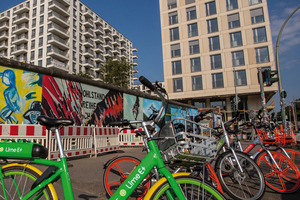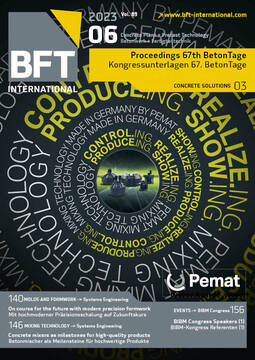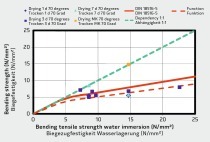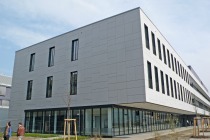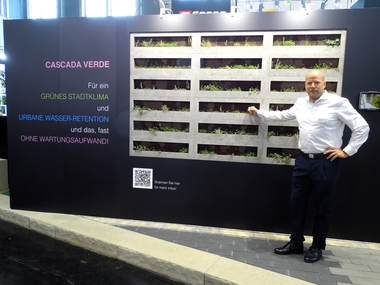Sustainable and low-carbon cast stone
Cast stones manufactured in compliance with DIN 18500-2 and standard DIN 18516-5 regarding façades made of cast stone, respectively, make a contribution to decarbonization, resource-conservation, durability and thus to the topic of sustainability. Potentials to help protecting the environment and the climate in the course of construction, manufacture and processing the material cast stone will be demonstrated here and this not only in theory, but also by means of particularly sustainable building structures using cast stone; all of them constructed by members of the German Information Association for Cast Stone (Info-b - Informationsgemeinschaft Betonwerkstein e.V.).
At the beginning, the focus will be on urban living spaces and the possibility of improving the air by the addition of titanium dioxide in the concrete matrix, converting air pollutants into water-soluble nitrates. In addition, light-colored cast stone surfaces result in a considerably lower heating effect in the city centers (albedo effect). More slender concrete components achieved by means of high-performance binder concepts also lead to a reduction of the specific carbon emissions by up to 65 %. Hence, for example, façades made of cast stone being 3-4 cm thin are realized without steel reinforcement. Even L-shaped steps with a thickness of only 2 cm are used today. In the past, standards required a minimum of 4 cm!
Cast stones using aggregates made of recycled material in their production ensure positive effects in terms of sustainability. The topic of resource-conservation is nothing new especially as far as the production of paving blocks and cast stone slabs is concerned; because the manufacturers have already been using up to 40 % of recycled aggregates in core and back concrete for many decades. A method already implemented by the Greeks and Romans for using recycled material is the terrazzo technique. And last but not least, the long service life of cast stone is considered, an advantage that plays a quite central role in many projects nowadays, such as the design of modern infrastructure projects. Due to the use of high-strength cast stones with their dense structure, the tendency to contamination is reduced substantially and the freeze resistance and/or freeze-thaw and deicing salt resistance is increased significantly; in particular in times, when the number of freeze-thaw cycles increases owing to the climate change.
The new Info-b brochure on this topic entitled “Betonwerkstein, Dekarbonisierung. Ressourcenschonung. Langlebigkeit” is available on the Internet under www.info-b.de for download.

